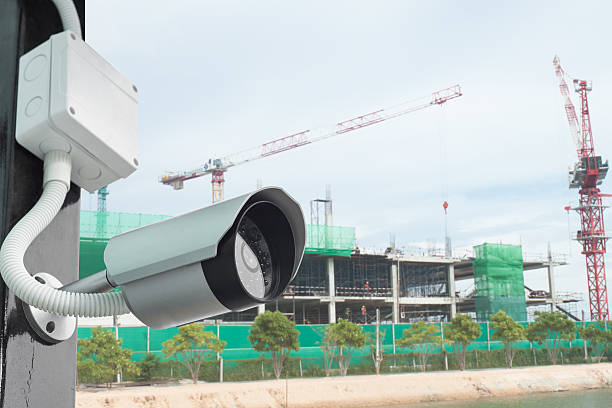Pipeline maintenance is an integral part of the infrastructure management of any urban environment. One of the most innovative and non-invasive methods to ensure the integrity and functionality of pipelines is through CCTV pipe inspections. This sophisticated technology allows for a detailed internal view of pipes, enabling early detection of potential issues and saving time and resources in the long run.
Understanding CCTV Pipe Inspections
CCTV pipe inspections involve the use of specialised camera systems that are inserted into pipelines to provide a live feed of the pipe’s interior. This inspection method is crucial for diagnosing the condition of underground pipes that are otherwise inaccessible. By employing these high-tech cameras, professionals can identify blockages, cracks, and other structural issues without the need for costly excavation work.
Benefits of CCTV Inspections for Pipeline Maintenance
One of the main benefits of utilizing CCTV technology for pipe inspections is the ability to proactively manage pipeline infrastructure. It minimises the need for reactive maintenance, which often comes after a failure has occurred. With CCTV inspections, potential problems can be tackled before they escalate, reducing risks and expenses associated with emergency repairs.
The Process of Conducting a CCTV Pipe Inspection
A CCTV pipe inspection process typically begins with the preparation of the pipeline. This can include cleaning the pipe to ensure that the camera captures clear images. Once prepped, the inspection team will insert a rod-mounted camera into the pipeline. The camera is then remotely guided through the pipeline, transmitting video footage to the technicians. The recorded footage is analysed to evaluate the pipe’s condition and to detect any irregularities.
Technical Advancements in CCTV Pipe Inspection Equipment
Advancements in camera technology have greatly improved the efficacy of CCTV inspections over the years. Modern cameras are equipped with high-resolution lenses, powerful lighting, and even laser measurement tools to accurately assess the internal diameter and other dimensions of pipes. Furthermore, some inspection cameras can pivot and zoom to provide a comprehensive view of pipe interiors, allowing for a more detailed analysis.
Identifying Common Pipeline Issues
Through CCTV pipe inspections, technicians can identify a myriad of potential issues. Common problems include blockages due to tree roots, accumulation of debris, pipe corrosion, misalignment, and cracks. Identifying these early can help to prevent pipe bursts, leaks, and the need for complete pipeline replacement.
Inspection Data and Reporting
An essential element of a CCTV pipe inspection is the data collection and reporting process. Inspectors typically generate detailed reports that include not only the video footage but also commentary on the pipeline’s condition. These reports provide valuable documentation for pipeline maintenance planning and can be used to prioritise repairs and replacements. Moreover, they offer an indispensable record for compliance with regulatory standards.
Supporting Preventive Maintenance Strategies
CCTV pipe inspections are a cornerstone of any preventive maintenance strategy, helping to extend the service life of pipeline systems. By routinely scheduling inspections, maintenance teams can stay ahead of issues, prioritising targeted repairs that are less intrusive and more cost-effective than widespread rehabilitation projects.
Challenges and Considerations
While CCTV pipe inspections offer many advantages, there are a few challenges and considerations to keep in mind. For instance, the pipe’s size, material, and the degree of damage can pose technical challenges for inspection equipment. Furthermore, there are varying levels of operator skill, with more experienced technicians being able to interpret the footage more accurately.
Choosing the Right CCTV Inspection Service
When selecting a service provider for CCTV pipe inspections, it is crucial to consider their equipment capabilities, experience, and reputation. It is advisable to engage a company that utilises state-of-the-art cameras and employs certified professionals who are skilled in interpreting inspection footage. Additionally, companies that offer comprehensive reports and actionable insights should be favoured, as these will be invaluable when planning future maintenance.
Integrating CCTV Inspections into Asset Management Systems
To maximise the effectiveness of CCTV pipe inspections, integration with asset management systems is recommended. Incorporating inspection data into these systems can help to track the health of the pipeline network over time and assist in the strategic planning of upgrades and repairs. Asset management systems can aggregate inspection data to provide a holistic view of the infrastructure, ensuring that resources are allocated efficiently.
Future Developments in Pipeline Inspection Technologies
Looking ahead, the future is bright for CCTV pipeline inspection technologies. Advancements such as AI-driven analysis, greater automation, and integration with Geographic Information Systems (GIS) are on the horizon. These innovations promise to further streamline the inspection process, delivering even more accurate assessments of pipeline health.
Conclusion
CCTV pipe inspections are undeniably one of the most powerful tools in pipeline maintenance today. This technology performs a pivotal role in managing and preserving the integrity of pipeline systems, helping utility managers and city planners maintain essential services with greater efficiency.
Implementing regular CCTV pipe inspections is an investment in the longevity and reliability of a city’s pipeline infrastructure. As the technology evolves, the potential for even smarter, proactive maintenance strategies grows, promising to safeguard our essential pipeline networks for future generations.
